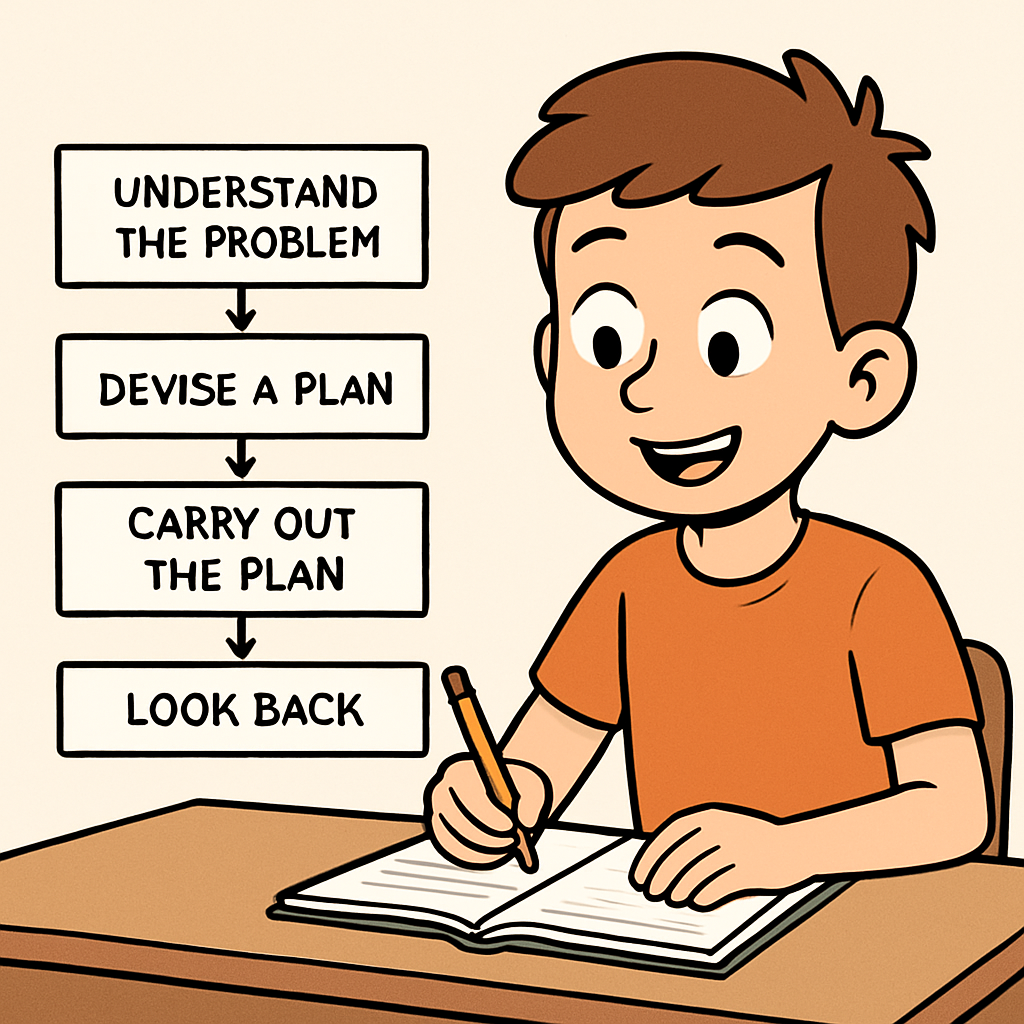 In this lesson, you'll learn about systematic approaches to solving problems and making decisions, which are key skills in computer science. These methods help you break down complex issues into manageable steps, ensuring you find effective solutions. This is especially useful for programming, algorithms, and real-world computing challenges.
In this lesson, you'll learn about systematic approaches to solving problems and making decisions, which are key skills in computer science. These methods help you break down complex issues into manageable steps, ensuring you find effective solutions. This is especially useful for programming, algorithms, and real-world computing challenges.
Here's what you'll cover:
Systematic problem-solving is a structured way to tackle challenges by following a logical sequence of steps. Unlike random guessing, it ensures you analyse the problem thoroughly and test solutions efficiently. In computer science, this is crucial for developing algorithms, debugging code, and designing systems.
Benefits include:
A common framework is Polya's method, which we'll explore next. This method was developed by mathematician George Polya and is widely used in computing.
 Polya's Four-Step Method is a systematic approach to problem-solving developed by mathematician George Polya. It is widely used in computer science for tackling complex problems logically. The four steps are:
Polya's Four-Step Method is a systematic approach to problem-solving developed by mathematician George Polya. It is widely used in computer science for tackling complex problems logically. The four steps are:
This method helps ensure efficient and effective solutions in programming and computing tasks.
 The first step in Polya's method is to fully understand the problem. This means reading it carefully, identifying what is known, what is unknown, and what the goal is.
The first step in Polya's method is to fully understand the problem. This means reading it carefully, identifying what is known, what is unknown, and what the goal is.
Key actions:
 Once you understand the problem, devise a plan. This involves brainstorming strategies, such as using algorithms, breaking it into sub-problems, or drawing diagrams like flowcharts.
Once you understand the problem, devise a plan. This involves brainstorming strategies, such as using algorithms, breaking it into sub-problems, or drawing diagrams like flowcharts.
Key actions: